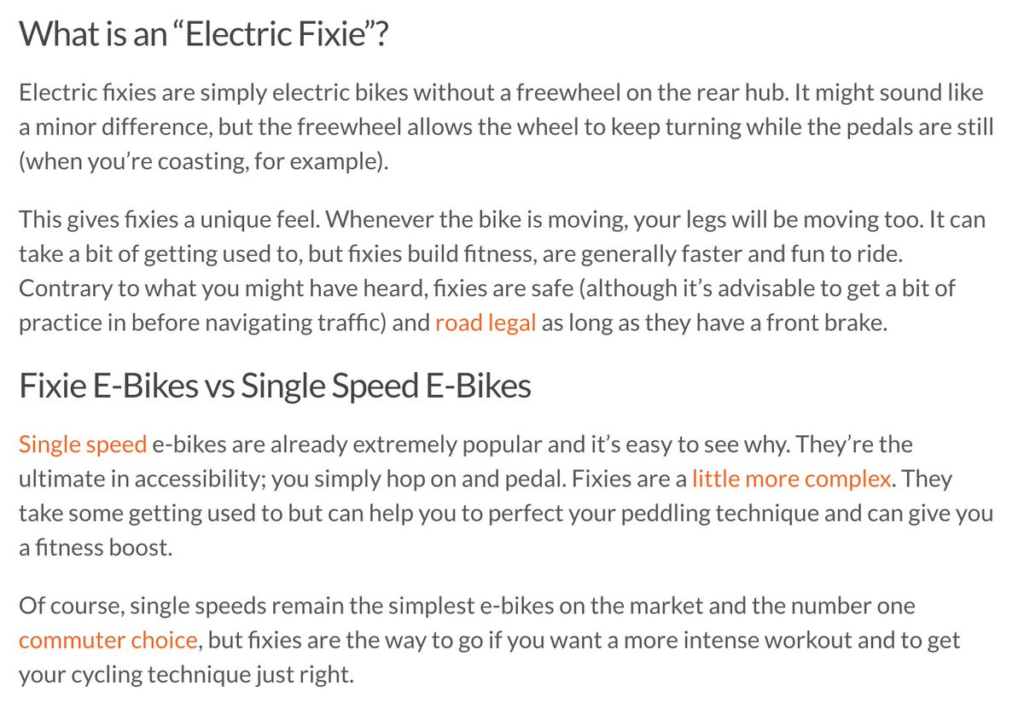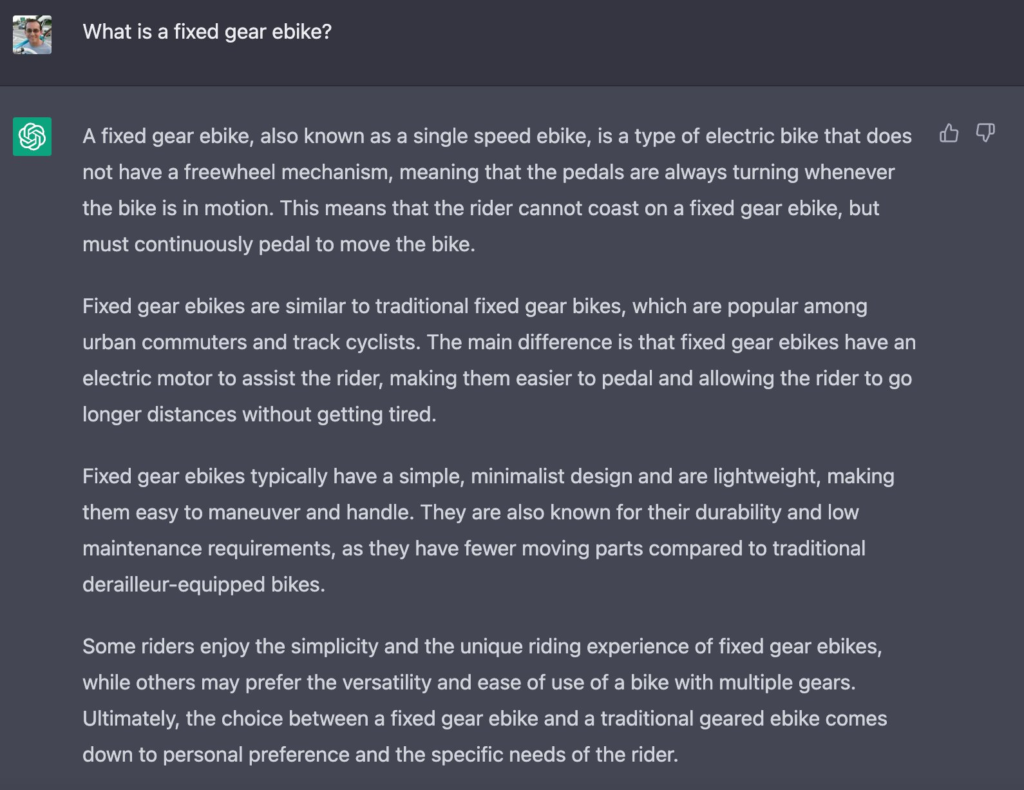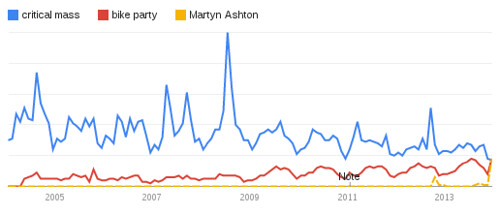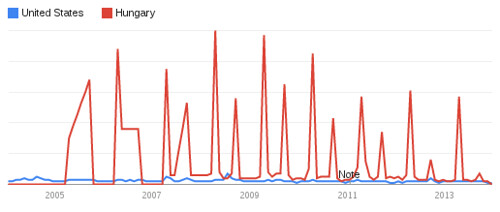Whilst reading my Mastodon feed, I ran across mention of a “fixed gear ebike.” This piqued my interest: can such a thing really exist?
The top results when I google “fixed gear ebike” include a blog post on the “Best Fixed Gear Electric Bikes,” which begins with a description of this weird, nonsensical chimera.

While reading this gibberish, it occurred to me that people now use the ChatGPT artificial intelligence chatbot to generate links for search optimization. I asked the ChatGPT bot, “What is a fixed gear ebike?”

Maybe you disagree, but to me this looks similar enough to be suspicious. In both examples, the writer (an AI? somebody from Fiverr?) obviously cribs boilerplate info about fixies, then replaces “bike” with “ebike” in the discussion.
Fixed gear ebikes?
And yet, I find real product pages for fixed gear ebikes. See, for example, this Luna “Fixed Stealth Ebike,” this “Fixie” from Rize, the “Fixie” from Valk, or the “New York Fixie” from Watt. The product names all imply they’re fixed gear bicycles, but are they?
Luna, to their, credit, includes this text in their description: “IT IS NOT a fixie bike… it does freewheel.” Weirdly enough, they put a 3-speed hub in their bike they call the “Fixed.” For the other bikes, you have to hunt through the product specs to verify these are normal singlespeeds with hub motors. These are not fixed gear bicycles.
The challenges of mating an electric motor to a fixed gear makes this seem unlikely as a product, but surely a modern day Prometheus somewhere has married their junk bin of electromagnetism to a 1985 Fuji fixie conversion to create this mad scientist mashup, but my google-fu fails me, and my Twitter inquiries resulted in a handful of “this is a horrible idea” responses.
How about it, you bike nerds: Has anyone built on an electric fixed gear bicycles?


